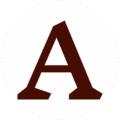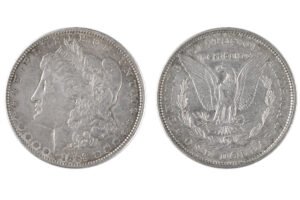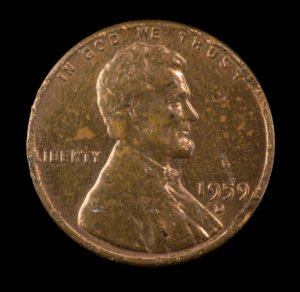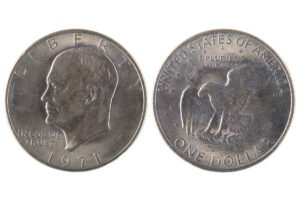The 1896 Indian Head Penny is a lot more than just a piece of metal; it’s a reflection of American numismatic history during the late 19th and early 20th centuries. Bearing the signs of innovation and change, this coin is a center of attraction for collectors today!
The true value of the 1896 Indian Head Penny extends way beyond its face value. And many factors play a crucial part in that value. So, if you found an 1896 Indian cent and want to know its actual worth, this blog is just what you need!
Key Takeaways
- A Mint State and Uncirculated 1896 Indian Head Penny can be worth up to $1,500.
- Although the large mintage number makes the 1896 Indian cent common, the Indian Head cents, with grades 66 or higher, are exclusively rare and valuable!
- The 1896 Indian Head Penny coin doesn’t bear any special minting marks.
- The most expensive 1896 Indian Head Penny, which was graded MS67, was sold for a staggering $45,600 in 2019.
History of the Indian Head Penny Series
Indian Head Penny Series was circulated from 1856 to 1909. Here’s the historical timeline of the coin series:
- 1856: Due to skyrocketing prices of copper, the United States Mint reduced the size of the pennies. That’s how we got the Flying Eagle Penny, which was smaller than the previous pennies.
- 1858: Mint realized that the Flying Eagle Penny had some design-related problems, which caused it to ben’t popular among citizens. So its designer, James Barton Longacre, was asked to revise the design!
- 1859: The production of the revised Indian Head Penny with Caucasian women wearing a Native American headdress (obverse) and a laurel wreath (reverse) started by the Philadelphia Mint.
| 1896 Indian Head Penny | Key Facts |
| Material (Composition) | Copper (95%), Zinc & Tin (5%) |
| Minting Location | Philadelphia |
| Year of Minting | 1896 |
| Weight | 3.11 grams (Approx.) |
| Diameter | 19 mm |
| Thickness | 1.47 mm |
| Designer | James Barton Longacre |
| Face Value | $0.01 |
| Mint Marks | None |
| Total Mintage | 39,055,431 |

Design Details of the 1896 Indian Head Penny
The Indian cents went through several design changes over the years. Among these, the last series, including the 1896 Indian Head Penny, displays the following design:
1. Obverse (Front) Design:
The obverse (heads) of the 1896 Indian Head Penny can be identified with the given design details:
- A left-profile cameo of the Caucasian woman representing Lady Liberty wearing a Native American Headdress over her wavy hair.
- “1896” is written right below the woman’s profile.
- “UNITED STATES” is relief-carved along the left (curved) edge, while “OF AMERICA” is carved on the right side.
- A band is tied around Lady’s forehead head with the word “LIBERTY” written on it, knotted at the back of her neck.
2. Reverse (Back) Design:
You will find these design features of the 1896 Indian Head Penny’s reverse (tails):
- “ONE CENT” is relief-carved prominently in the center.
- Two well-carved laurel wreaths are seen around the edge of the coin, with the two branches tied by a ribbon at the bottom.
- Three arrows stick out from the ribbon’s knot towards the right.
- A shield (symbol of the Union’s defense) is carved at the top of the coin’s reverse.
3. Coin Composition & Measurements:

The 1896 Indian Head Penny has a composition of 95% copper and 5% zinc and tin combined. However, this isn’t the original composition. After the penny’s production in 1859, the first coins were made of 88% copper and 12% nickel.
It was in 1864 when the Mint decided to increase copper percentage from 88% to 95%. And this new composition was kept intact until the coin was discontinued in 1909.
An 1896 Indian Head Penny weighs around 3.11 grams, with a diameter of 19 mm and a thickness of 1.47 mm. This coin has a plain, unreeded edge.
5 Factors That Affect the Value of the 1896 Indian Head Penny
Want to find out the value of your old 1896 Indian cent? Learn about these factors that decide its worth!
1. Condition and Grading
Your Indian Head Pennies’ value depends heavily on its condition. Apart from visible features like faded reliefs, patina, etc., professional grading decides its condition.
Based on our extensive research on sites like eBay, here are the estimated prices of 1896 Indian Head Penny w.r.t. Its grading & condition:
| 1896 Indian Head Penny Condition | Estimated Value |
| Good to Very Fine (VF) | $1 – $10 |
| Extremely Fine (XF) to Mint State (MS 65) | $20 – $150 |
| MS 65+ Grade or Proof Coin (PR 70) | $300 – $500 |
| Uncirculated & Graded | Up to $1,200 |
Get your coin professionally graded by a trusted coin grading service before assigning a value!
2. Rare Anomalies & Errors in 1896 Indian Head Penny
Back in time, many errors took place during the coin minting process. These errors have a great impact on the value of old coins today.
The 1896 Indian cent also bears a few punching & minting errors as follows. And if yours has any of these anomalies, it’s likely a collectible:
- Cud Error: If you see an irregular blob on the surface of your Indian Head penny, it’s likely a cud error. This error happens when a piece of the coin die breaks. These blobs may vary in size, depending on the size of the broken die piece. And the bigger the cud, the more value it adds!
- Doubled (Repunched) Date Error: You can easily identify this anomaly with a doubled (bold) date (1896) or single doubled numbers on the coin. This error was caused when the date was punched twice: once hand-punched by makers and then machine-punched by the master hub post-1909.
- Misplaced Date Error: If your coin has one or more digits punched anywhere on the surface other than the date area, it has a misplaced date error. This anomaly also makes the Indian Head penny rare and increases its value.
Make sure that the coin errors are original and authentic. Some errors may be a part of coin damage, which reduces the value of the coin, unlike genuine anomalies.
3. 1896 Indian Cent Mintage & Rarity

The facts state that the Philadelphia Mint minted 39,055,431 1896 Indian Head Pennies. This high mintage number clearly shows that even mint condition (MS) graded pennies can be easily found, making them less rare and valuable.
However, the Indian Head coin with “MS66” or higher grading is quite rare and may cost anywhere from $2,000 to $20,000.
4. 1896 Indian Head Penny Color Varieties
The 1896 Indian penny was available in three different colors: red, red-brown, and brown. Out of these, the red Indian cents are most popular among collectors.
Let’s learn about the features and values of Indian Head pennies based on their colors:
| Indian Head Penny Color | Features | Estimate Price (Based on Grading) |
| Red | Blemish-free, shinier surface, looks entirely made of copper | Up to $1,100 |
| Red-Brown | A few greenish spots and blemishes on the surface | $5 – $150 |
| Brown | Faded surface with most of the surface covered in oxidized green spots, very dull appearance | $1 – $30 (Up to $70 for Uncirculated coins) |
5. The 1896 Proof Indian Head Proof Coin

Besides regular cents, the Philadelphia Mint also minted some 1896-proof Indian Head Pennies, which were exclusively made for the purpose of collecting.
And that’s why these proof coins are made with high-quality materials and precise minting, costing around $1,000 – $6,000.
Here’s how you can spot an 1896 Indian Head Proof coin:
- High-quality material with the original composition
- Frosted finished on the relief
- Shiny surface without blemishes
- Deep cameo contrast (the contrast between the field/background of the coin and its relief-carving)
The red Indian Head Penny Proof coins are way more valuable than the red-brown and brown ones.
How to Spot a Fake 1896 Indian Head Penny?
If you want to ensure your antique 1896 Indian Head Penny is real or not, you must learn about these counterfeit features:
- The word “LIBERTY” is missing from the Lady’s band
- Uneven, distorted, & bad shape of the digits and numerals in the date on the coin
- Fake die markers
- Fake aging color & quality of the planchets
- Different numeric font than the original minted one
If your Indian Head coin is free from all the above features, it’s definitely a real 1986 Indian Head Penny!
With its unique design, composition, colors, and errors, the 1896 Indian Head Penny is a precious find for coin collectors worldwide! Even with a high mintage, this coin is definitely worth collecting. If you want more old coins worth money, I’ve excellent options!
Note: This article is intended for informational, educational, and entertainment purposes only. Some images are illustrative and may not represent actual brands, products, or related entities. All trademarks, product names, brand logos, packaging, and other intellectual property referenced remain the exclusive property of their respective owners. Any brand mentions or references are provided solely for descriptive and educational context and do not imply any formal or commercial association.










